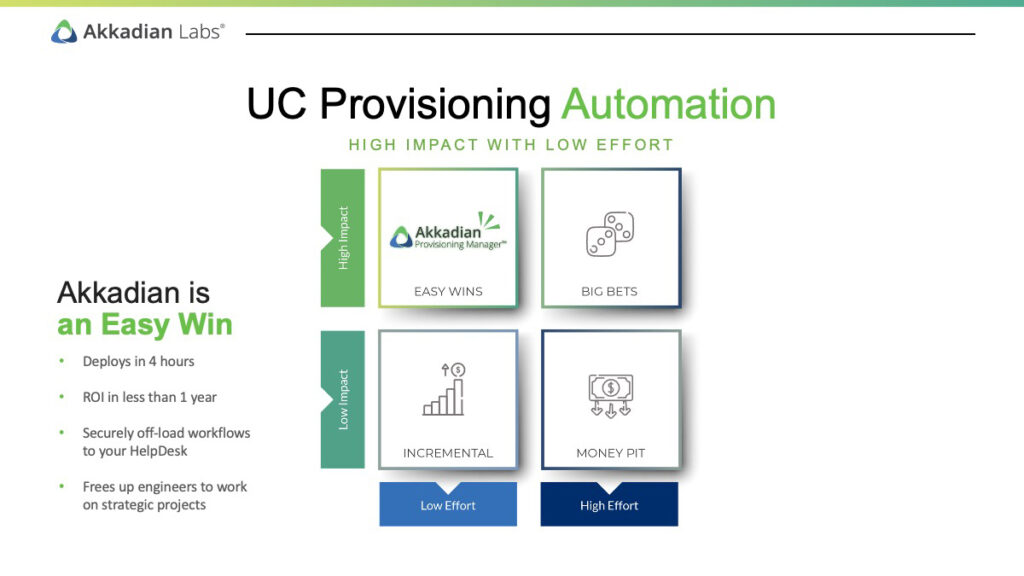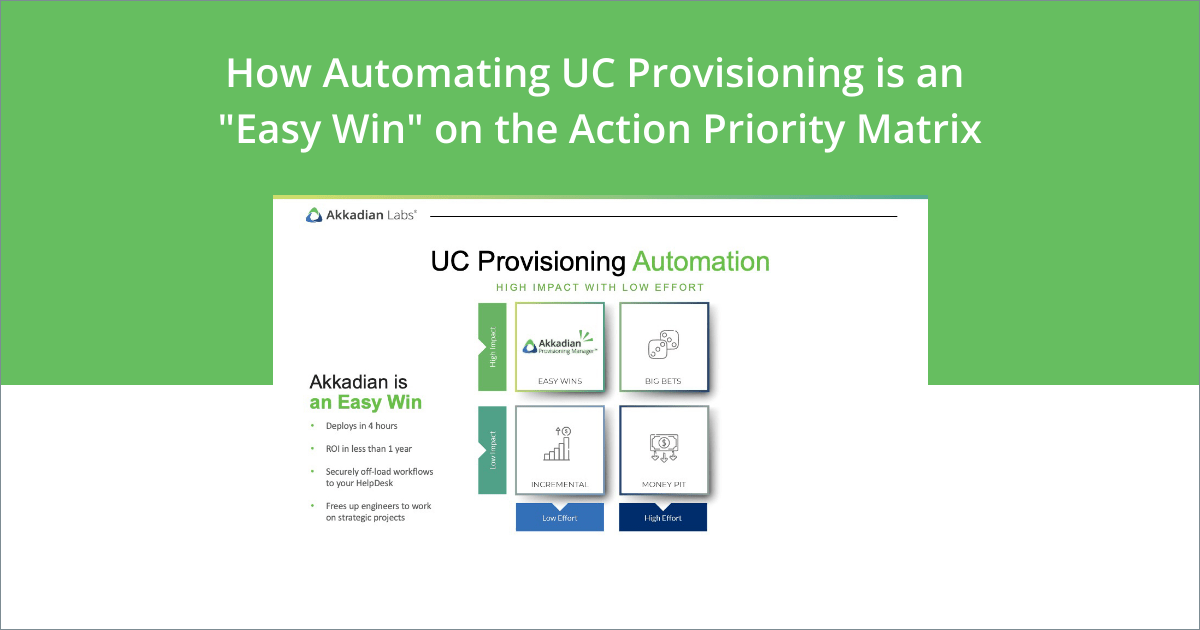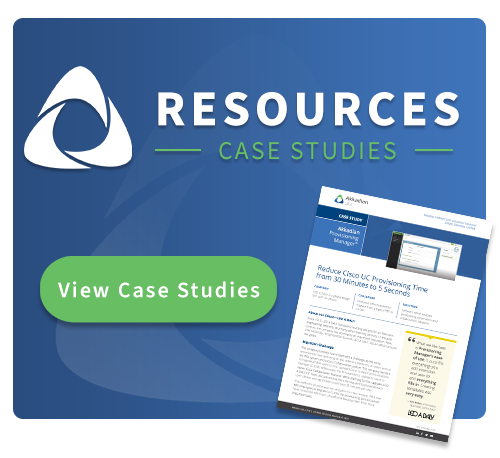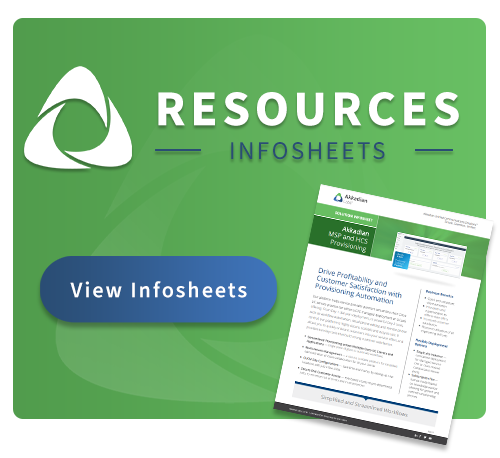IT departments and UC engineering teams have many options for how they can streamline their operations with new software applications. The problem is resources and time are limited, and obviously, there is no way to do everything at once.
So, how do they decide which options are worthy of the resources necessary to deploy the solution?
An easy way to begin to answer this question is an action priority matrix. This blog will dive into what that is and how it makes the case for UC teams to prioritize deploying an automated provisioning solution.
What is an Action Priority Matrix?
An action priority matrix is a framework to prioritize which projects an enterprise should undertake and when.
It helps organizations lay out and organize all available options for strategic improvements and new software initiatives along two axes – impact and effort. This creates four quadrants for categorizing and prioritizing projects:
- Big Bets: These are the high-effort, high-impact projects. They will take a lot of time and resources, but in the end, they will have the impact to show for it. These are projects you invest in and plan out well in advance.
- Money Pits: These are high-effort, low-impact projects. They will take a lot of time and resources and in the end, your team will have very little to show for it. If a software solution or project falls in this category, don’t bother.
- Incremental: These are low-effort, low-impact projects. Overall, they will take little time and resources to implement, but they will have a slight positive impact to match. These are tasks that should be done incrementally and delegated out to junior employees.
- Easy Wins: These are low-effort, high-impact projects. These projects take little time and resources and will yield major benefits to the organization. Projects that fall into this category should always be done first.
How Automating UC Provisioning Can Be an “Easy Win” Project
Manual UC user provisioning takes time and can lead to many errors. Depending on the complexity of an enterprise’s UC environment, a UC engineer can spend up to 30 minutes alone on one new hire – manually entering their information into every required application.
Bulk provisioning projects – like a UC platform migration or a merger of two companies’ UC environments – only add more time and complexity.
If an enterprise can automate the provisioning process, they can not only save time and money but can also eliminate costly errors and allow UC engineers to refocus their time and energy on more strategic work initiatives.
The good news is there are many provisioning automation solutions out there.
However, making UC provisioning automation an “Easy Win” project depends on finding the right solution that can integrate natively with your UC environment. Also, being able to extend provisioning functionality to other applications is always a plus. That way your company can reap the benefits and time-savings for years to come without the up-front cost of a length implementation cycle.
Akkadian Provisioning Manager is the Easy Win

Akkadian Provisioning Manager is a great way to automate your UC provisioning.
It comes with native integrations with Cisco UC products, Webex, Microsoft Teams and Zoom. Plus, native integrations with Active Directory and ServiceNow allow for full-cycle, zero-touch user provisioning. All without costly errors that can cause outages.
The best part – it only takes four hours to implement – low effort, high impact.
Don’t wait to get started. Deploying Akkadian Provisioning Manager can be an easy way for your enterprise to save time and money.



